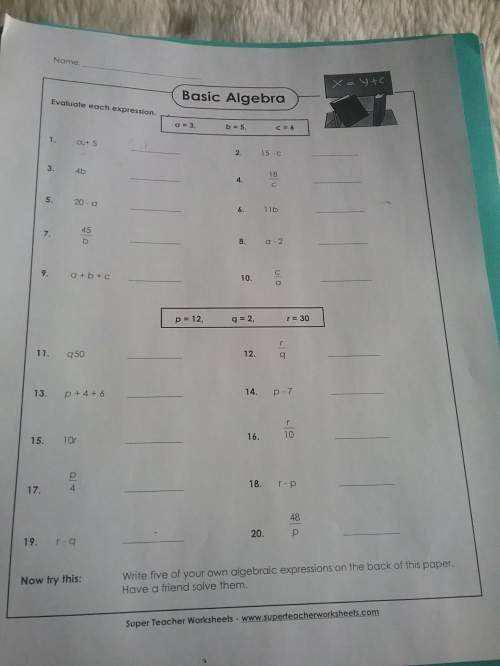The following ordered pairs (x, y) define the relation q.
q = {(-1, 4), (-2, 3), (4, 4)...

Mathematics, 16.12.2019 00:31 itsme77
The following ordered pairs (x, y) define the relation q.
q = {(-1, 4), (-2, 3), (4, 4), (2, -2)}
is q a function?
a) no, because there is more than one x value from some y values
b) yes, because there is exactly one y value for every x value
c) yes, because there is exactly one x value for every y value
d) no, because there is more than one y value for every x value

Answers: 3
Another question on Mathematics

Mathematics, 21.06.2019 18:30
Apsychology student wishes to investigate differences in political opinions between business majors and political science majors at her college. she randomly selects 100 students from the 260 business majors and 100 students from the 180 political science majors. does this sampling plan result in a simple random sample? why or why not? no, because each group of 200 students in the sample does not have the same chance of being selected. yes, because each group of 200 students in the sample has the same chance of being selected. no, because each individual student does not have an equal chance of being selected. yes, because each individual student has the same chance of being selected.
Answers: 1

Mathematics, 21.06.2019 19:20
Is the product of two rational numbers irrational or rational? first, make a hypothesis by multiplying two rational numbers. then, use variables such as x=a/b and y=c/d and the closure property of integers to prove your hypothesis.
Answers: 1

Mathematics, 21.06.2019 19:50
How do i simply this expression (quadratic formula basis) on a ti-84 or normal calculator?
Answers: 3

Mathematics, 22.06.2019 00:00
The construction of copying qpr is started below. the next step is to set the width of the compass to the length of ab. how does this step ensure that a new angle will be congruent to the original angle? by using compass take the measures of angle and draw the same arc according to it.
Answers: 2
You know the right answer?
Questions




History, 25.03.2020 06:34



Mathematics, 25.03.2020 06:34







Mathematics, 25.03.2020 06:34



Biology, 25.03.2020 06:34

Mathematics, 25.03.2020 06:34





